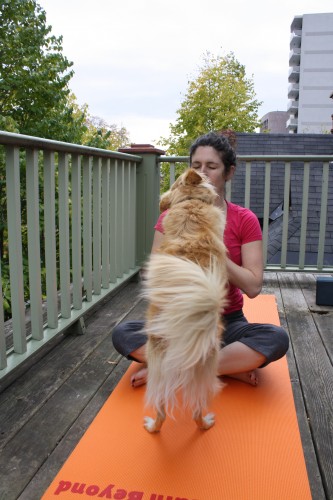Enhancing Your Practice: Yoga Retreat
/Hi Yogis. You may have noticed I took a break from blogging for a while. I have been working on moving into some other media, likely podcasting, but as I continue to work on that side of information sharing I’ve missed connecting with all of you. SO I am hoping to return to regular blogging while I pursue the podcasts. For the next few weeks I will be covering various ways you can enhance your yoga practice. This week is about what, in my opinion, is one of the most fun ways to delve deeper into your practice, a yoga retreat. Below I’ve noted some common questions/misconceptions about yoga retreats and tried to clear them up. And read on to the end for a very exciting announcement!
Commonly Asked Questions:
What if I am not good enough at yoga to attend a retreat? First of all let me just say, there is no way to be “good” at yoga. Yoga is a continual way of being that involves a physical practice of Asana as well as many other limbs of mental and spiritual practice. Often people feel they are not strong or flexible “enough” to attend yoga class, let alone attend a retreat. There are two things I have to say to this: 1) You don’t reach enlightenment by touching your toes! Those of you who have taken a yoga class with me know that when my hamstrings are angry I can barely touch my toes! Yet I and others still seem to think I am a good yoga teacher. The physical practice of yoga often gets overemphasized by people trying to sell you pants or get you to follow them on Instagram. But in reality yoga should be about how you feel, act and perceive the world. Touching my toes or falling into a backbend isn’t the parts of yoga I use every day, when I am stuck on a crowded bus or frustrated with my husband. I call on a deeper mindfulness practice for that!
2) I went on my first yoga retreat when I had only had a regular practice for about a year, and it was one of the best things I could have done for my practice! I got to spend a whole week with 2 teachers and only 7 other students, I got tons of one on one assistance and expertise and got to learn a great deal more than I would have learned in another year of group classes. Was I the least experienced and least flexible person in the group? Probably, but I was feeling so good I didn’t even care.
I want to rest when I take time off. Isn’t a yoga retreat too much work? The level of strenuous activity you do on a yoga retreat is a bit influenced on what kind of retreat you go on and a bit on what you make of it. If you are looking to completely chill out I wouldn’t suggest a “Yoga and Bootcamp” Retreat! That said one of the great things about a retreat is that it is ALL ABOUT YOU! So you get to decide if that sunrise meditation will be healing or really if what you need is another three hours of sleep.
Isn’t a retreat a fancy luxury experience? Much like the last question, this is all about what retreat you choose. Some people love to lounge in luxury while others feel more centered with minimum provisions. This will of course effect the budget of the retreat but the good news is there is something for almost everyone.
Can I afford a retreat? Well I don’t know what your budget it! But retreats are often more affordable than people think. While 5 star luxury centers are often out of reach, many retreats often opportunities to share a room with another participant and cut down on costs by making cooking a shared activity that people can bond over. Taking some time for self-care is always important and doesn’t have to break the bank!!
Can I attend a retreat if I don’t know anyone going? Yes! A retreat is a great place to meet people from your neighborhood and around the world. After a few days of grounding and growing together you may even make friends for life.
Exciting News: I am co-hosting a Yoga and Wellness Retreat with Yoga Teacher and Medi-Spa Practitioner Obe Jones-Darell of Sound Body Health! We will be spending a long weekend in Poro de Mos, Portugal where we will be offering two yoga classes a day, a daily guided meditation, medi spa services, Bliss Yoga (an amazing combination of restorative yoga, acupuncture and massage) home cooked meals and more. The retreat will be June 3- June 6th. For more information please contact me and get more information and sign up here.We are offering some limited time early bird deals so if you are on the fence get some more information today.


 If you have children and they show interest in your yoga practice you can ask if they want to join you. Depending on their age it may not be the same practice but you have the chance to introduce them to yoga and the practice of mindfulness.
If you have children and they show interest in your yoga practice you can ask if they want to join you. Depending on their age it may not be the same practice but you have the chance to introduce them to yoga and the practice of mindfulness.